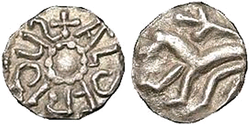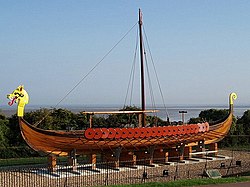Anglo-Saxon England

Anglo-Saxon England is the history of England from the 5th to 11th centuries.
The Anglo-Saxons were people from Germanic tribes. They first came as migrants to southern Britain from central Europe. Anglo-Saxon history begins after the end of Roman control.
In the 5th and 6th centuries there were seven Anglo-Saxon kingdoms: Northumbria, Mercia, East Anglia, Essex, Kent, Sussex, and Wessex.
Anglo-Saxon Christianity arrived in the 7th century. Viking invasions and Danish settlers started in the 8th century. The gradual unification of England under Wessex hegemony occurred during the 9th and 10th centuries.
Anglo-Saxon England ended with the Norman conquest of England by William the Conqueror in 1066. Anglo-Saxon identity survived beyond the Norman Conquest,[1] and slowly developed into the modern English people.
Anglo-Saxon England Media
Southern Britain in AD 600 after the Anglo-Saxon settlement, showing division into multiple petty kingdoms
Escomb Church, a restored 7th-century Anglo-Saxon church. Church architecture and artefacts provide a useful source of historical information.
Silver coin of Aldfrith of Northumbria (686–705). OBVERSE: +AldFRIdUS, pellet-in-annulet; REVERSE: Lion with forked tail standing left
Anglo-Saxon-Viking coin weight. Material is lead and weighs approx 36 g. Embedded with a sceat dating to 720–750 AD and minted in Kent. It is edged with a dotted triangle pattern. Origin is the northern Danelaw region, and it dates from the late 8th to 9th century.
References
- ↑ Higham, Nicholas J., and Martin J. Ryan. The Anglo-Saxon world. Yale University Press, 2013. p7-19








